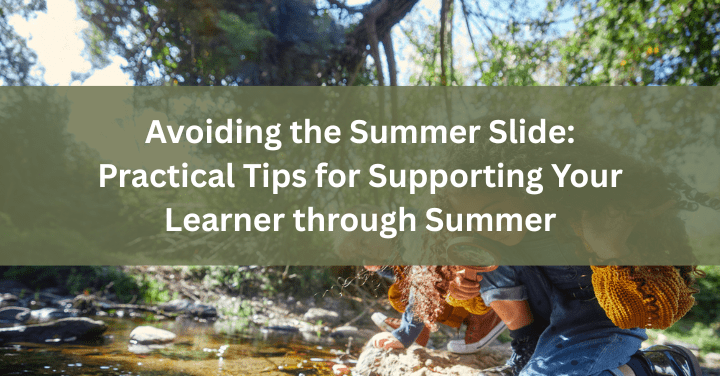When the final school bell rings, most kids (and parents) are ready for a break. But while rest and relaxation are well-earned, completely stepping away from academic routines over the summer can lead to what’s known as the “summer slide”—a real and measurable decline in academic skills, especially in reading and math.
Studies show that students can lose up to two months of progress over the summer, and the effects are cumulative year after year. The good news? With just a little intention and the right strategies, you can help your child maintain their momentum—and even get ahead.
Here are four parent-friendly ways to keep learning alive without sacrificing summer fun:
1. Make Reading a Daily Habit (and Make It Enjoyable!)
One of the simplest ways to guard against summer learning loss is by encouraging regular reading. But this doesn’t have to feel like a chore.
- Let kids choose books that interest them—even graphic novels or magazines count!
- Create a “cozy reading corner” at home or bring a book to the pool, the park, or on road trips.
- Set a family reading challenge or join your local library’s summer program for incentives and fun activities.
Pro tip: If your child struggles with reading or avoids it altogether, summer is an ideal time to provide extra support with targeted one-on-one reading instruction.
2. Keep Math Fresh with Real-Life Application
Math often takes the biggest hit over the summer, especially when not used regularly. The solution? Make math part of daily life.
- Involve kids in cooking and ask them to double or halve a recipe.
- Give them a small summer budget to manage and help them comparison shop.
- Turn car rides into mental math games or play math-based board games like Yahtzee or Monopoly.
If your child had a tough time with math during the school year, consider some structured review or enrichment with someone who can customize support to their level and learning style.
3. Create a Loose Summer Learning Routine
Structure doesn’t mean rigidity. Just a small amount of academic time each day (think 20–30 minutes) can make a major difference.
- Choose a consistent time each morning or evening for review work or quiet reading.
- Use online platforms or printable workbooks tailored to your child’s grade level.
- Try “theme weeks” that explore science experiments, creative writing, or even financial literacy.
Kids often respond better to someone other than a parent when it comes to accountability—some families find that working with a tutor a couple of times per week keeps everyone happier and on track.
4. Follow Their Curiosity to Enrichment Opportunities
Summer is the perfect time to stretch beyond the standard curriculum and spark your child’s interests.
- Is your child fascinated by outer space, ancient history, or animals? Look for local camps, virtual workshops, or books that go deep into those areas.
- Encourage project-based learning, like building a model, writing a story, or starting a mini business.
- Let them explore at their own pace—curiosity-driven learning often leads to the deepest growth.
If your child thrives with hands-on, individualized attention, a private instructor can help turn that passion into real-world learning.
A Summer of Balance and Growth
Preventing the summer slide doesn’t mean packing your child’s schedule. With a mix of light structure, meaningful activities, and personalized support, summer can be a time of both rest and readiness. By keeping learning low-stress and engaging, your child will return to school confident, curious, and ahead of the curve.





